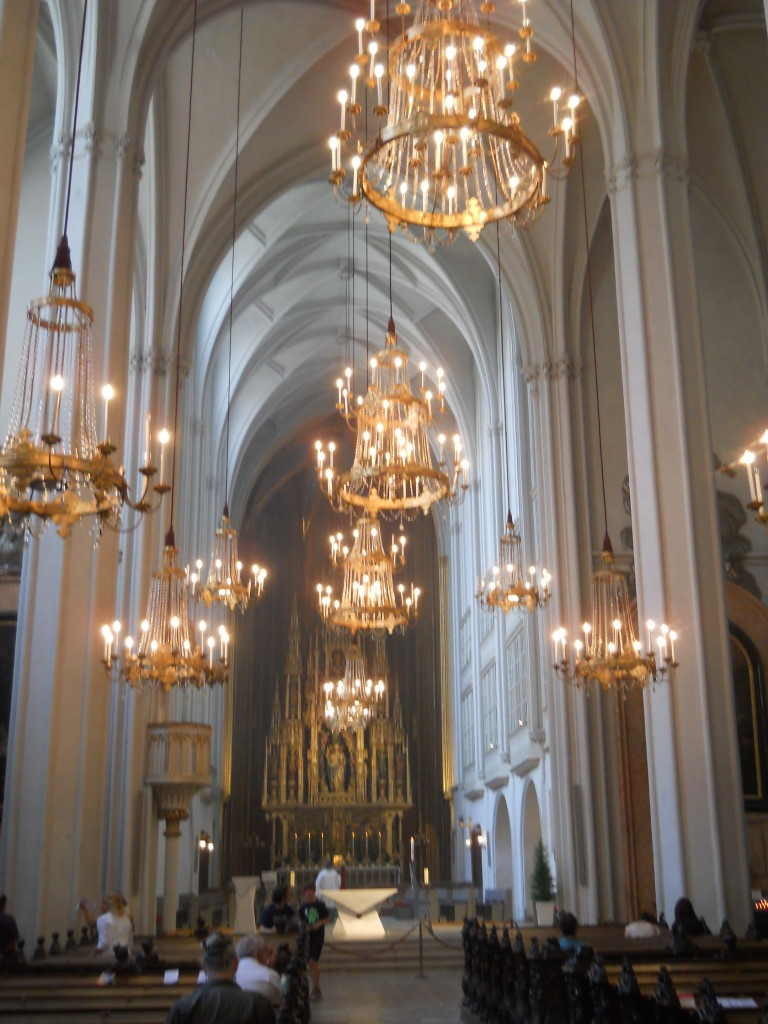
Lesslie Newbigin’s book, Foolishness to the Greeks, changed my life. I don’t remember a lot of the specifics, but by reading this book I came to realize that I was looking at the world through some very thick and tinted lenses. Everyone looks at the world through the metaphorical spectacles of a worldview.
Competing Worldviews
There are competing worldviews in the West, by which I mean Europe and North America. One of the dominant ones has been around for a while–the Modern story. This may be in the process of being replaced by the newer “Post-Modern” story. Another worldview that has been around much longer is derived from the Bible. Although very different, we in the West look at the world through a weird blend of all three.
If you are going to understand the glasses through which you are view yourself and the world, you need to begin by understanding the basic characteristics of each worldview which is tinting the lenses by which you look at everything.
In our culture, all our glasses are being strongly tinted by modernism. The roots of the Modern worldview are in the 18th century, the Enlightenment. While it took some pretty big hits in the 20th century, many of the ideas which characterize this perspective are with us today.
[click_to_tweet tweet=”To understand the glasses through which you are view yourself and the world, you need to begin by understanding the basic characteristics of each worldview which is tinting the lenses by which you look at everything. #worldview ModernWorldview” quote=”To understand the glasses through which you are view yourself and the world, you need to begin by understanding the basic characteristics of each worldview which is tinting the lenses by which you look at everything.”]
The Main Ideas in the Modern Worldview:
-
-
Human reason is the source of truth; the light, in Enlightenment, is Reason. Francis Bacon and Rene Descartes really got this idea going and it has stuck with us. They trusted in reason to be the arbiter of truth (Read “Fact versus Truth“) albeit from different starting points. Bacon used reason to take him from observation of particular phenomenon to universal principles, and Descartes saw the human mind as the final authority in understanding reality. Although they approached it from different angles, both trusted reason to lead to the truth.
-
Reality is material. There is nothing that transcends the material world, or, if there is, it has no relevance to one’s life. In other words, there is no such thing as the supernatural, only the natural. This idea is called materialism or naturalism. If human reason is the source of truth, then Bacon’s approach, called empiricism, will help us to discover the truth. This only works in the natural world, but since nothing else is real, there is no problem.
-
The individual is of primary importance. In the modern worldview, human reason is autonomous. So also is the individual whose motto has become, “You’re not the boss of me!” Our history is one of emancipation from those who would curb our independence: kings and queens, God and the church, communism and socialism, and tradition and social conventions. Our free economies and liberal democracies are testaments to our individual autonomy. One source of this idea is Rene Descartes whose “I think therefore I am” not only grounded truth in the reason but in the reason of the individual.
-
Faith in Progress. Humanity is on an upward trajectory. Because of human reason and its offspring, science and technology, Modernity places a lot of faith in progress. It has long believed that we need to get rid of silly superstitions and religious beliefs. Reason rather than religion will allow the human race to continue up the road toward perfection and science and technology will solve the problems that we face.
-
Categories and more categories. Because human reason is only autonomous if the world is only material, the modern mind establishes and defends boundaries between categories. There are many. Here are a few: mind/body, natural/supernatural, material/spiritual, immanent/transcendent, public/private, rational/emotional, fact/value, reason/faith, knowledge/belief, sacred/secular and objective/subjective.
-
Main Differences between the Modern and Christian Worldviews
-
Human reason is part of God’s good creation, but it has also been distorted by sin, so it cannot be completely trusted.
-
Obviously, the Biblical worldview is not materialist or naturalist because it proclaims a transcendent God who is the source of objective realities like The Good, The True and The Beautiful.
-
The communal nature of God as Father, Son and Holy Spirit challenges the idea that those created in the image of the triune God ought to be understood first as an autonomous individual.
-
God’s Grace and not man’s ability will be the cause of any progress we experience in this world, and that’s only if we surrender to Christ because he’s the only one that can deal with our real problem–SIN.
-
Christ, who is wholly God, became wholly human and yet did not surrender any of his divinity; this alone presents a challenge to the clean categories so loved by the Modern mind. An honest reading of the Bible will blur many of the other boundaries between the other categories held so dear by modernism.
The problem is, the Biblical worldview and the modern worldview are not kept distinct. Our glasses are tinted by both of these (and other) contradictory worldviews.



